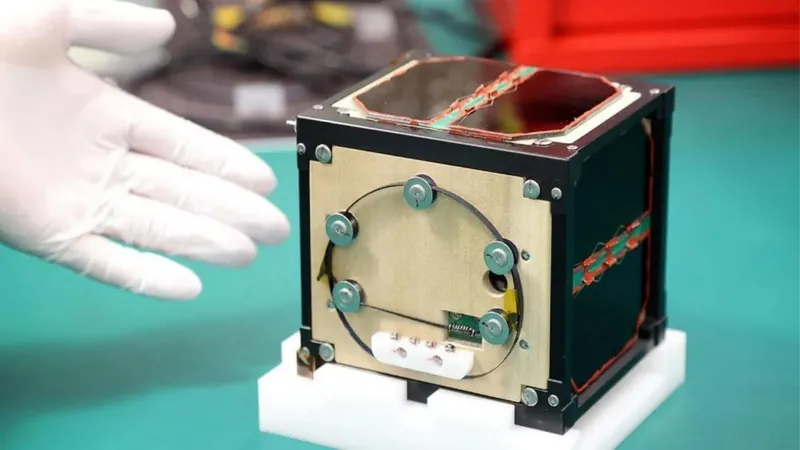
Japan Breaks New Ground with World’s First Wooden Satellite: A Game-Changer for Sustainable Space Exploration?
2024-11-06
Author: Olivia
Introduction
Japan has made a groundbreaking leap in the realm of sustainable space exploration by launching LignoSat, the world's first wooden-panelled satellite. This innovative project aims to determine if wood can be an effective material for future space missions, ushering in a new era of eco-friendly technology beyond our planet.
Design and Launch
Crafted by a team of researchers from Kyoto University, LignoSat has a lightweight design, tipping the scales at just 900 grams. It was launched aboard a SpaceX mission en route to the International Space Station. Once it reaches its destination, LignoSat will be deployed into orbit around Earth, where it will conduct six months of rigorous testing on the durability of timber in the unforgiving realm of space.
Material Innovation
The satellite's panels are made from magnolia wood, fashioned through a traditional Japanese technique that eliminates screws and glue, marking a significant departure from conventional satellite construction. Researchers express optimism that wood could eventually replace certain metals in space technologies, potentially paving the way for future habitats on the Moon or Mars.
Unique Properties of Wood in Space
Interestingly, while on Earth, wood is vulnerable to rot and combustion, space offers an unexpected advantage: the absence of water and oxygen minimizes these risks. Professor Koji Murata from Kyoto University commented on this unique phenomenon, which could redefine materials used in space applications.
Historical Context
However, the idea of using wood in space isn't entirely novel. Dr. Simeon Barber from the Open University in the UK noted that wood has previously been utilized in spacecraft, particularly as a heat-resistant element during re-entry. For example, the Soviet Union employed cork to provide traction for lunar rovers on the moon's surface.
Challenges Ahead
Despite its promising attributes, using wood as a material in critical structural components poses challenges due to its unpredictable properties. This unpredictability makes precise measurements of strength difficult, which could complicate its application where durability is essential.
Mission Goals and Integration
With LignoSat's mission, scientists aim to scrutinize how wood withstands various space challenges, including radiation exposure, temperature fluctuations, and the vacuum of space. The satellite integrates wooden panels with traditional aluminum frameworks and is equipped with sensors to monitor the wood's performance throughout the mission. Although not entirely made of wood, this experiment aims to evaluate the potential of timber as a sustainable and renewable resource in spacecraft construction.
Environmental Considerations
One of the significant advantages of wood lies in its environmental benefits when re-entering Earth's atmosphere. In light of increasing concerns over space debris, using materials that combust with minimal pollution is highly appealing. While Dr. Barber cautions against assuming that wood will entirely alleviate the issue of space junk, as carrying additional materials could be necessary to ensure complete incineration, the potential for a new, greener approach to spacecraft design is intriguing.
Conclusion
As Japan ventures further into unknown territories with LignoSat, this mission could revolutionize how we approach materials in space technology, promoting greater sustainability and innovative practices for future exploration. Will wood become the next cornerstone of space travel? Only time will tell!









 Brasil (PT)
Brasil (PT)
 Canada (EN)
Canada (EN)
 Chile (ES)
Chile (ES)
 Česko (CS)
Česko (CS)
 대한민국 (KO)
대한민국 (KO)
 España (ES)
España (ES)
 France (FR)
France (FR)
 Hong Kong (EN)
Hong Kong (EN)
 Italia (IT)
Italia (IT)
 日本 (JA)
日本 (JA)
 Magyarország (HU)
Magyarország (HU)
 Norge (NO)
Norge (NO)
 Polska (PL)
Polska (PL)
 Schweiz (DE)
Schweiz (DE)
 Singapore (EN)
Singapore (EN)
 Sverige (SV)
Sverige (SV)
 Suomi (FI)
Suomi (FI)
 Türkiye (TR)
Türkiye (TR)
 الإمارات العربية المتحدة (AR)
الإمارات العربية المتحدة (AR)